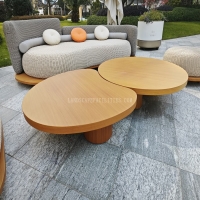Welcome to the website for landscape facilities products and knowledge.
How do manufacturers address the challenge of color fading in high-UV environments?
Manufacturers face significant challenges in preserving the vibrancy of materials exposed to high-UV environments, such as outdoor furniture, automotive parts, and construction materials. To address color fading, they employ a combination of advanced technologies and material innovations.
1. UV-Resistant Additives: Specialized stabilizers like hindered amine light stabilizers (HALS) and UV absorbers are integrated into polymers and coatings. These additives absorb or scatter UV radiation, preventing it from degrading pigments.
2. Durable Coatings: High-performance coatings, such as polyurethane or fluoropolymer finishes, create a protective barrier that reflects UV rays and reduces oxidative damage.
3. Material Selection: Manufacturers opt for inherently UV-resistant materials like acrylics, certain polycarbonates, or metals with powder coatings to minimize fading.
4. Testing & Simulation: Accelerated weathering tests simulate years of UV exposure in weeks, allowing manufacturers to refine formulations before mass production.
5. Nanotechnology: Nano-sized particles, such as titanium dioxide or zinc oxide, are embedded in materials to enhance UV blocking without compromising aesthetics.
By combining these strategies, manufacturers ensure products retain their color and structural integrity even under prolonged sunlight exposure, meeting consumer demands for longevity and visual appeal.
Related search:

Recommendation
Elliptical metal outdoor table with nested design, resembling wood grain, round table